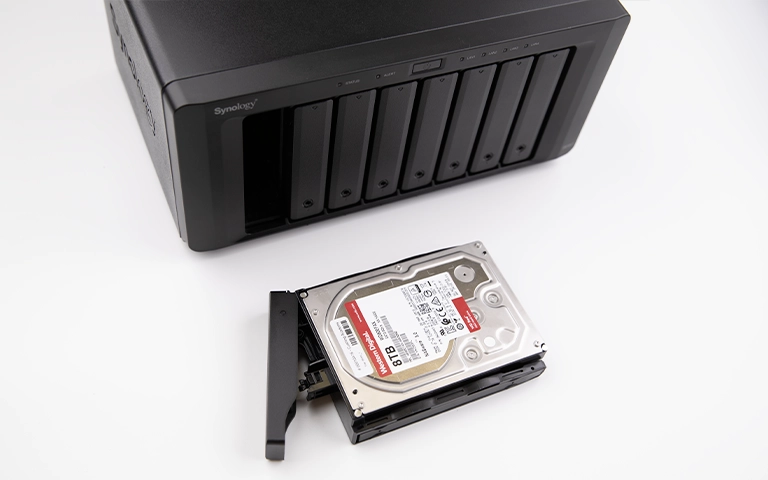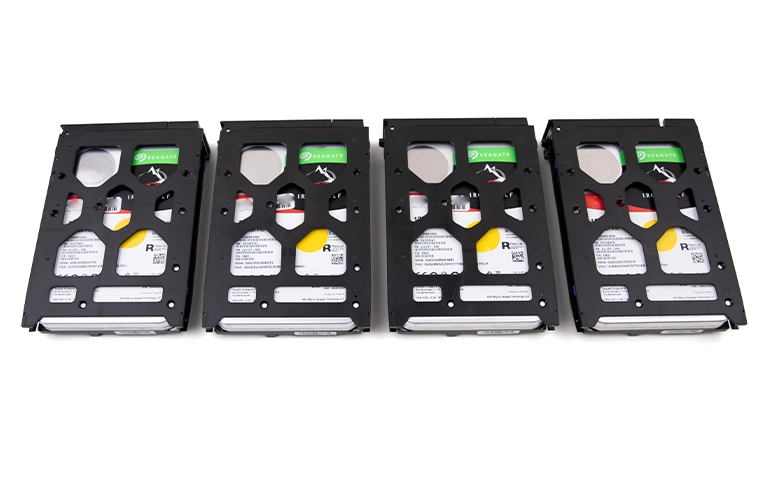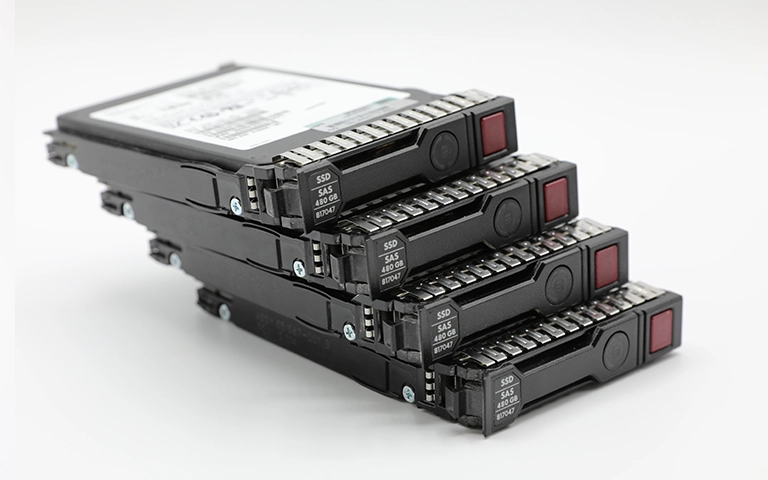RAID 0 is one of the simplest and fastest RAID configurations, widely used by users who prioritize performance and speed. It splits data evenly across two or more drives, allowing information to be read and written simultaneously. This setup greatly improves performance for tasks like video editing, gaming, and data-intensive applications.
However, while RAID 0 offers impressive speed, it lacks one essential feature: redundancy.
If even a single drive in the array fails, all stored data becomes inaccessible. For this reason, RAID 0 is best suited for non-critical operations where performance outweighs reliability.
Understanding how RAID 0 works, along with its benefits and potential drawbacks, helps users make informed decisions about where and when to implement it.

How RAID 0 Works
RAID 0 uses a method called data striping to improve speed and efficiency. In this setup, files are divided into smaller blocks and written across multiple drives at the same time.
For example, if two drives are used, one part of a file is stored on the first drive while the next part is written on the second. This process allows faster read and write performance since both drives work together.
However, RAID 0 provides no data protection. Because there is no mirroring or parity, the failure of even one drive means the entire array becomes unreadable. All files stored in the array depend on every disk functioning correctly.
While this design offers outstanding performance, it also carries higher risk. To better understand how data striping works in different RAID levels, read our article on what striping in RAID means.
Advantages of RAID 0
RAID 0 is popular among professionals and enthusiasts who need maximum performance. By distributing data across multiple drives, it allows faster access and transfer speeds compared to using a single hard drive. Below are the main benefits of using RAID 0:
High Performance: RAID 0 delivers faster read and write speeds, which makes it ideal for tasks that involve large files, such as video editing, 3D rendering, and gaming.
Full Storage Utilization: Unlike RAID levels that use parity or mirroring, RAID 0 uses the total combined capacity of all drives. No space is reserved for redundancy, giving you full storage efficiency.
Simple Setup: RAID 0 arrays are easy to configure and require no complex parity calculations or synchronization. They can be implemented using either software or hardware RAID controllers.
Cost-Effective for Performance Needs: Because it uses all available drive space and requires no additional disks for redundancy, RAID 0 provides an affordable way to improve speed on a budget.
While these benefits make RAID 0 attractive for performance-oriented environments, it is still not suitable for storing important or irreplaceable data.
For more insights on where RAID configurations are used, explore our post on RAID in computers.

Disadvantages of RAID 0
While RAID 0 offers great speed, it comes with serious risks that make it unsuitable for storing critical data. The biggest drawback is the complete lack of redundancy, meaning there is no protection if a drive fails.
No Fault Tolerance: If one drive in the array stops working, all data is lost. Since files are split between multiple drives, there is no way to recover full files without professional assistance.
High Risk of Data Loss: The chances of data loss increase with each additional drive added to the array. A single malfunction, power failure, or mechanical issue can make the entire system inaccessible.
Complex Recovery Process: When RAID 0 fails, data recovery becomes more complicated because the data is fragmented across multiple disks. Professional recovery engineers are needed to rebuild the structure and extract files safely.
Not Suitable for Sensitive Data: RAID 0 should never be used for servers, databases, or business storage that requires data reliability. It is best for temporary or non-critical workloads.
Understanding these risks is essential before setting up RAID 0. To explore common failure causes in more detail, visit our post on reasons for RAID data loss.
When to Use RAID 0
RAID 0 is an excellent choice when performance is the top priority and data protection is not a major concern. It provides impressive speed for applications that process large files or require quick data access, but it should only be used in specific situations.
- Gaming systems that benefit from fast load times.
- Video editing and multimedia workstations where speed matters more than redundancy.
- Temporary data processing or rendering tasks where the data can be recreated if lost.
- Business servers, databases, and any environment handling sensitive or irreplaceable information.
- Systems that operate continuously without frequent backups.
To reduce risk, pair RAID 0 with a regular backup strategy or cloud-based replication system. Even high-performance setups can experience sudden drive failure.
Learn more about this topic in our article RAID is not backup.

RAID 0 Data Loss and Recovery
Since RAID 0 has no redundancy, data loss can happen instantly when one or more drives fail. Common symptoms include missing volumes, corrupted partitions, or drives that are no longer recognized by the system.
In such cases, continuing to use the array may overwrite data and make recovery much more difficult.
Common Causes of RAID 0 Data Loss:
Physical drive failure or bad sectors
Power surge or sudden system shutdown
Faulty RAID controller or cable connection
Accidental formatting or incorrect rebuild attempts
File system corruption due to software errors
Recovering data from a failed RAID 0 array requires advanced techniques. Professionals first create sector-by-sector images of each drive, then analyze striping patterns to reconstruct the array structure. Only after this step can the data be safely extracted.
DIY recovery attempts often result in permanent data loss, as RAID 0 does not store any redundant information.
For safe diagnostics and restoration, read more about troubleshooting RAID failure.
Fast turnaround times for business-critical data
Professional RAID 0 Recovery Services
When a RAID 0 array fails, every second matters. Because there is no redundancy, recovery requires expert handling to prevent permanent data loss.
At RAID Recovery Services, our engineers specialize in restoring data from failed or corrupted RAID 0 systems with precision and care.
We begin with a detailed diagnostic to identify the cause of failure and evaluate each drive. Every disk is imaged in a controlled environment before reconstructing the array virtually to recover the original data. This method ensures safety and accuracy throughout the process.
Our team successfully restores RAID 0 arrays affected by drive failure, controller damage, or accidental formatting.
Learn more about similar cases on our page about failed RAID 0 volume recovery.
If your RAID 0 setup has failed or become unreadable, contact RAID Recovery Services for a professional evaluation and reliable recovery solution.

Conclusion
RAID 0 delivers outstanding performance and storage efficiency, but it offers no protection against drive failure. A single malfunction can result in complete data loss, making it essential to understand both its benefits and risks before implementation.
If you rely on RAID 0 for high-speed performance, always maintain regular backups and monitor drive health closely. In the event of a failure, avoid rebuild attempts that could overwrite data.
Instead, trust RAID Recovery Services to perform a secure evaluation and restore your files using professional recovery methods.
Trust the experts with proven results
Frequently Asked Questions
What is RAID 0 used for?
RAID 0 is primarily used for applications that need high performance, such as gaming, video editing, and temporary data processing. It offers faster read and write speeds by splitting data across multiple drives, but it does not provide any redundancy or fault tolerance.
Is RAID 0 good for storing important data?
No. RAID 0 is not suitable for storing critical files because it lacks redundancy. If one drive fails, all data is lost. It should only be used when performance matters more than reliability.
What happens if one drive in RAID 0 fails?
If a single drive fails, the entire array becomes inaccessible. Since data is striped across all disks, no complete file can be recovered without professional help.
Can RAID 0 data be recovered?
Yes, in many cases. Professional recovery engineers can rebuild the array by imaging each drive and reconstructing the original striping pattern. DIY recovery attempts often make the situation worse, so expert assistance is recommended.
How can I protect my data when using RAID 0?
Always keep separate backups on external or cloud storage. Use monitoring tools to check drive health and replace failing disks early. RAID 0 should never be relied on as a backup solution.